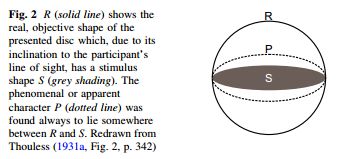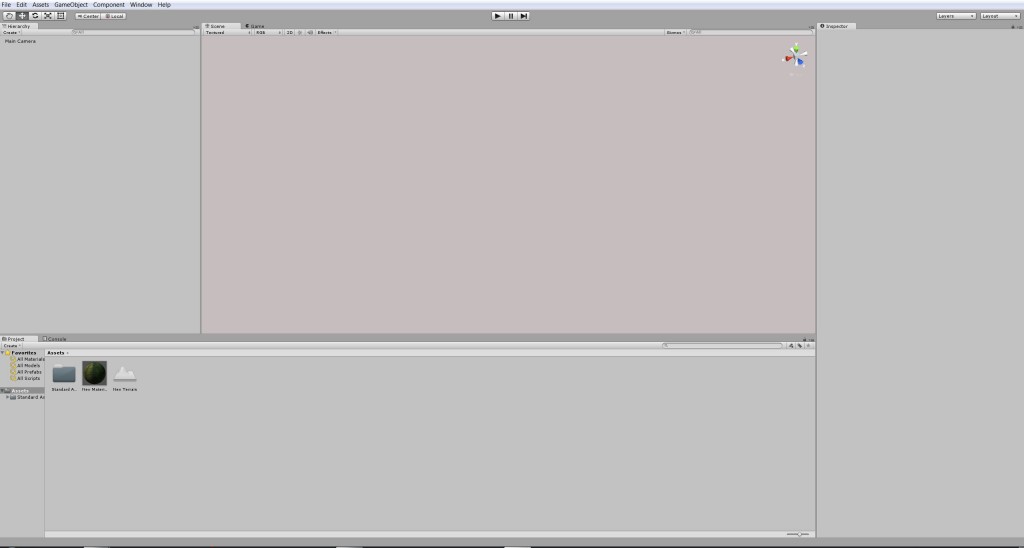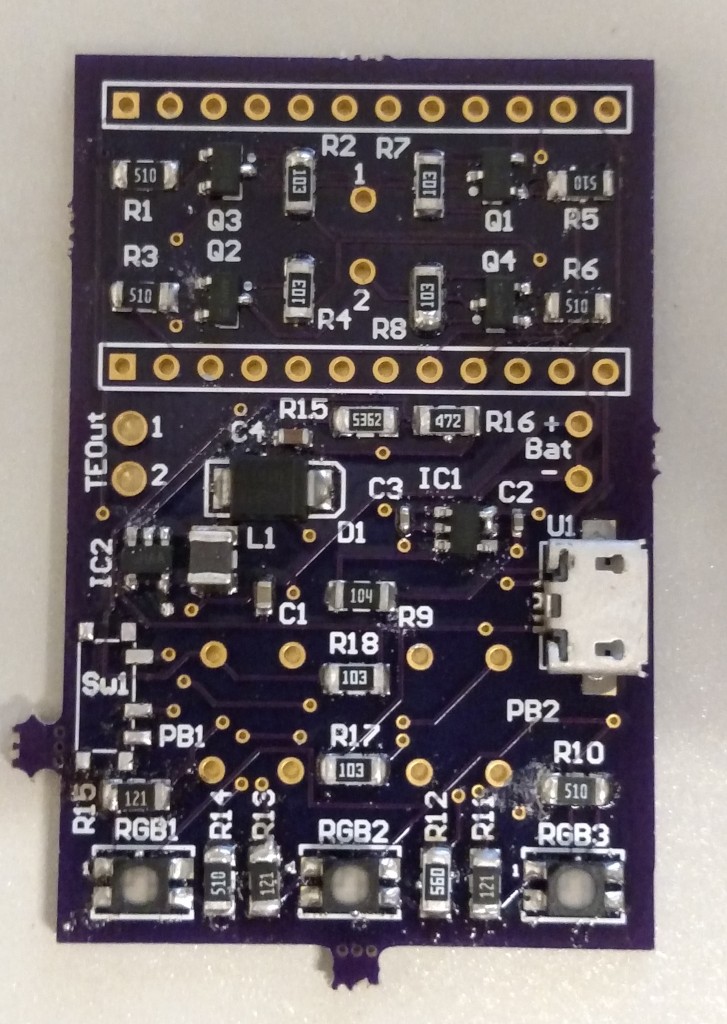Initial paper:
Kuhl, S. A., Thompson, W. B., & Creem-Regehr, S. H. (2009). HMD calibration and its effects on distance judgments. ACM Transactions on Applied Perception (TAP), 6(3), 19.
Experiments testing distance estimation subject to three potential miscalibrations in HMDs: pitch, pincusion distortion, minification/magnification via FOV. Only FOV is seen to cause change. Calibration procedures are suggested; the gist is to match against real world objects, popping the HMD on and off.
List of references, grouped by topic and ordered (loosely) by novelty vs related papers, usefulness, and whim:
— horizon / tilt different in VR / Real?
OOI, T. L., WU, B., AND HE, Z. J. 2001. Distance determination by the angular declination below the horizon. Nature 414, 197–200.
ANDRE, J. AND ROGERS, S. 2006. Using verbal and blind-walking distance estimates to investigate the two visual systems hypothesis. Percept. Psychophys. 68, 3, 353–361.
— support for effect of horizon position / tilt
MESSING, R. AND DURGIN, F. 2005. Distance perception and the visual horizon in head-mounted displays. ACM Trans. Appl. Percept. 2, 3, 234–250.
RICHARDSON, A. R. AND WALLER, D. 2005. The effect of feedback training on distance estimation in virtual environments. Appl. Cognitive Psych. 19, 1089–1108.
GARDNER, P. L. AND MON-WILLIAMS, M. 2001. Vertical gaze angle: Absolute height-in-scene information for the programming of prehension. Exper. Brain Res. 136, 3, 379–385.
— depth in photographs (2D?)
SMITH, O. W. 1958a. Comparison of apparent depth in a photograph viewed from two distances. Perceptual Motor Skills 8, 79–81.
SMITH, O. W. 1958b. Judgments of size and distance in photographs. Amer. J. Psych. 71, 3, 529–538.
KRAFT, R. N. AND GREEN, J. S. 1989. Distance perception as a function of photographic area of view. Percept. Psychophys. 45, 4, 459–466.
— AR calibration (vs real world objects)
MCGARRITY, E. AND TUCERYAN, M. 1999. A method for calibrating see-through head-mounted displays for AR. In Proceedings of the IEEE and ACM International Workshop on Augmented Reality. IEEE, Los Alamitos, CA, 75–84.
GILSON, S. J., FITZGIBBON, A. W., AND GLENNERSTER, A. 2008. Spatial calibration of an optical see-through head mounted display. J. Neurosci. Methods 173, 1, 140–146. Lawrence Erlbaum Associates, Hillsdale, NJ, 229–232.
GENC, Y., TUCERYAN, M., AND NAVAB, N. 2002. Practical solutions for calibration of optical see-through devices. In Proceedings of the 1st IEEE and ACM International Symposium on Mixed and Augmented Reality (ISMAR’02). IEEE, Los Alamitos, CA.
AZUMA, R. AND BISHOP, G. 1994. Improving static and dynamic registration in an optical see-through HMD. In Proceedings of the 21st Annual Conference on Computer Graphics and Interactive Techniques (SIGGRAPH’04). ACM, New York, 197–204.
— effects of miscalibration / display properties
KUHL, S. A., CREEM-REGEHR, S. H., AND THOMPSON, W. B. 2008. Recalibration of rotational locomotion in immersive virtual environments. ACM Trans. Appl. Percept. 5, 3.
KUHL, S. A., THOMPSON,W. B., AND CREEM-REGEHR, S.H. 2006. Minification influences spatial judgments in virtual environments. In Proceedings of the Symposium on Applied Perception in Graphics and Visualization. ACM, New York, 15–19.
KUHL, S. A., THOMPSON, W. B., AND CREEM-REGEHR, S. H. 2008. HMD calibration and its effects on distance judgments. In Proceedings of the Symposium on Applied Perception in Graphics and Visualization. ACM, New York.
WILLEMSEN, P., COLTON, M. B.,CREEM-REGEHR, S. H., AND THOMPSON,W. B. 2009. The effects of head-mounted display mechanical properties and field-of-view on distance judgments in virtual environments. ACM Trans. Appl. Percept. 6, 2, 8:1–8:14.
WILLEMSEN, P., GOOCH, A. A., THOMPSON, W. B., AND CREEM-REGEHR, S. H. 2008. Effects of stereo viewing conditions on distance perception in virtual environments. Presence: Teleoperat. Virtual Environ. 17, 1, 91–101.
LUMSDEN, E. A. 1983. Perception of radial distance as a function of magnification and truncation of depicted spatial layout. Percept. Psychophys. 33, 2, 177–182.
— effects of feedback (lasts for a week?)
MOHLER, B. J., CREEM-REGEHR, S. H., AND THOMPSON,W. B. 2006. The influence of feedback on egocenteric distance judgments in real and virtual environments. In Proceedings of the Symposium on Applied Perception in Graphics and Visualization. ACM, New York, 9–14.
— visual quality
THOMPSON,W. B.,WILLEMSEN, P., GOOCH, A. A., CREEM-REGEHR, S. H., LOOMIS, J. M., AND BEALL, A. C. 2004. Does the quality of the computer graphics matter when judging distances in visually immersive environments? Presence: Teleoperat. Virtual Environ. 13, 5, 560–571.
— distortion correction
WATSON, B. A. AND HODGES, L. F. 1995. Using texture maps to correct for optical distortion in head-mounted displays. In Proceedings of the IEEE Conference on Virtual Reality. IEEE, Los Alamitos, CA, 172–178.
BAX, M. R. 2004. Real-time lens distortion correction: 3D video graphics cards are good for more than games. Stanford Electr. Eng. Comput. Sci. Res. J.
ROBINETT, W. AND ROLLAND, J. P. 1992. A computational model for the stereoscopic optics of a head-mounted display. Presence: Teleoperat. Virtual Environ. 1, 1, 45–62.
— camera calibration (spherical distortion, maybe some vision stuff)
TSAI, R. Y. 1987. A versatile camera calibration technique for high-accuracy 3D machine vision metrology using off-the-shelf TV cameras and lenses. IEEE J. Rob. Autom. 3, 4, 323–344.
WENG, J., COHEN, P., AND HERNIOU, M. 1992. Camera calibration with distortion models and accuracy evaluation. IEEE Trans.
Patt. Anal. Mach. Intell. 14, 10, 965–980.
— “distance underestimation exists”
WITMER, B. G. AND KLINE, P. B. 1998. Judging perceived and traversed distance in virtual environments. Presence: Teleoperat. Virtual Environ. 7, 2, 144–167.
KNAPP, J. 1999. The visual perception of egocentric distance in virtual environments. Ph.D. thesis, University of California at Santa Barbara.
— measures of percieved distance
SAHM, C. S., CREEM-REGEHR, S. H., THOMPSON, W. B., AND WILLEMSEN, P. 2005. Throwing versus walking as indicators of distance perception in real and virtual environments. ACM Trans. Appl. Percept. 1, 3, 35–45.
—- NOT FOUND —-
CAMPOS, J., FREITAS, P., TURNER, E.,WONG, M., AND SUN, H.-J. 2007. The effect of optical magnification/minimization on distance estimation by stationary and walking observers. J. Vision 7, 9, 1028a.
ELLIS, S. R. AND NEMIRE, K. 1993. A subjective technique for calibration of lines of sight in closed virtual environment viewing systems. In Proceedings of the Society for Information Display. Society for Information Display, Campbell, CA.
SEDGWICK, H. A. 1983. Environment-centered representation of spatial layout: Available information from texture and perspective. In Human and Machine Vision, J. Beck, B. Hope, and A. Rosenfeld, Eds. Academic Press, San Diego, CA, 425–458.
(also of note: sedgwick seems attatched to work on distance judgements vs spatial relations / disruptions)
GRUTZMACHER, R. P., ANDRE, J. T., AND OWENS, D. A. 1997. Gaze inclination: A source of oculomotor information for distance
perception. In Proceedings of the 9th International Conference on Perception and Action (Studies in Perception and Action IV ).
STOPER, A. E. 1999. Height and extent: Two kinds of perception. In Ecological Approaches to Cognition: Essays in Honor of
Ulric Neisser, E. Winograd, R. Fivush, and W. Hirst, Eds. Erlbaum, Hillsdale, NJ.
(book)
LOOMIS, J. M. AND KNAPP, J. 2003. Visual perception of egocentric distance in real and virtual environments. In Virtual and
Adaptive Environments, L. J. Hettinger and M. W. Haas, Eds. Erlbaum, Mahwah, NJ, 21–46.
(book)
ROGERS, S. 1995. Perceiving pictorial space. In Perception of Space and Motion,W. Epstein and S. Rogers, Eds. Academic Press,
San Diego, CA, 119–163.
(requested)
RINALDUCCI, E. J.,MAPES,D., CINQ-MARS, S. G., ANDHIGGINS,K. E. 1996. Determining the field of view in HMDs: A psychophysical method. Presence: Teleoperat. Virtual Environ. 5, 3, 353–356.
(misc find, not in refs)
Hendrix, C., & Barfield, W. (1994). Perceptual biases in spatial judgements as a function of eyepoint elevation angle and geometric field of view (No. 941441). SAE Technical Paper.
(misc find, not in refs)
Blackwell Handbook of Sensation and Perception
http://onlinelibrary.wiley.com.ezproxy.library.wisc.edu/book/10.1002/9780470753477



